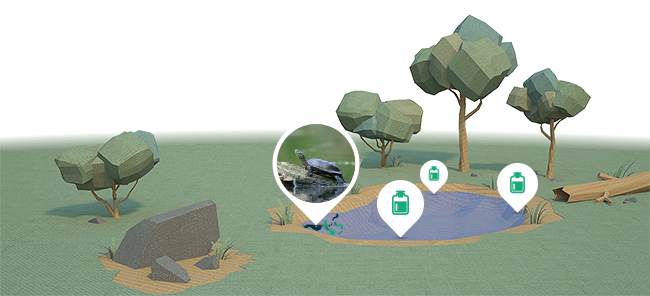Sampling is a crucial step in the implementation of eDNA analyses, in particular in aquatic environments where the target species DNA is often present in small amounts and diluted in large volumes of water.
eDNA sampling in stagnant waters
In 2008, the Laboratoire d’Ecologie Alpine proposed a first eDNA protocol based on three 15 mL water samples. This protocol, tested for the first time to survey the bullfrog in France, enabled detection of this invasive species on all sites where its presence was confirmed by traditional field surveys (Ficetola et al. 2008; Dejean et al. 2012). However, when the species is present at low densities on the study site and has a limited home range, the DNA is released into restricted areas and the probability of collecting this DNA with only three water samples is then relatively low.

To solve this issue, SPYGEN developed in 2011 a new sampling strategy enabling optimised detection of rare species. This protocol is based on the pooling of 20 water samples of 40 mL collected all around the study site. A sub-sample of 90 mL is then taken from this total volume and conserved in ethanol until analysed in the laboratory. This protocol has been used successfully since 2012 for monitoring different species of fish, amphibians, crustaceans, mammals and dragonflies in Europe. For more information, you can download: Biggs et al. 2015.pdf
Since 2015, sampling has been carried out using a sterile filtration capsule (VigiDNA SW kit) to avoid the use of ethanol and increase the amount of DNA collected from the medium (20 fully filtered 100 mL water samples). This protocol is now used for all VigiDNA expertise carried out in ponds and ponds.
eDNA sampling from faeces
eDNA analyses from faeces are performed as part of diet studies or for species identification. To ensure proper conservation of the DNA contained in each faecal sample, SPYGEN proposes a sampling kit enabling fast drying of samples collected in the field.

